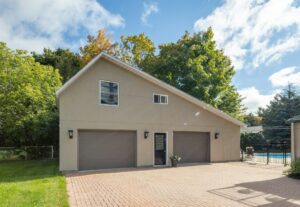
However, how do you know that remodeling is a good deal for you? Before you start dreaming about building your own perfect Joanna Gaines kitchen, you should compare the costs of renovations with the costs of relocating to a new property. To do that, you need to know how to accurately calculate the costs of a remodel, which is why you need this guide to renovation budgeting.
Table of Contents
ToggleCreate a Ballpark Estimate
What your renovations will cost depend entirely on what you want to do, where you live and whom you hire. Still, it is possible to get a rough idea of your potential expenses with a few ballpark figures. Most contractors are reluctant to provide even close to vague numbers for fear that clients will get stuck on those typically low estimates, so you should instead assemble some figures by talking to knowledgeable staff at home improvement or design stores. For most major renovations, such as a kitchen or bathroom remodel or a room addition, you can expect to pay between $100 to $200 per square foot.
Acquire Contractor Quotes
While a ballpark figure might cover any range of renovations, a contractor quote is much more specific. Before you seek bids from contractors, you should know precisely what you want from your remodel, down to the paint color. With this specificity, contractors are better equipped to provide accurate pricing, with itemized lists of costs for you to review.
Give Yourself Wiggle Room
Remodels never cost the same amount that you expect – and they definitely never cost less. Once you have a ballpark figure, or better: once you flesh out those vague numbers with concrete costs – you should tack on an additional 10 to 20 percent. This wiggle room will account for unexpected problems in the remodel, like a busted pipe or unknown costs related to existing upgrades.
Find Ways to Cut Costs
The numbers you calculate in your estimates don’t have to be final. There are always ways to cut costs and fit your vision into a more manageable budget. Here are a few examples of how you can use less of your savings to build the home of your dreams:

- DIY. If you already have the tools and some know-how, you should consider completing your own renovations. Likely, it will take you more time to achieve a finished look, but you will also have total control over the quality and quantity of your remodel. Which renovations can you do yourself and which should you outsource? That depends on your experience and budget.
- Home warranty. Home appliances are often covered under your home warranty policy. If a primary reason you want a remodel is that your appliances are failing, you can save some cash by relying on your home warranty to purchase new machines. How much does a home warranty cost? That depends on your provider and your plan.
- Used fixtures. You don’t have to buy everything brand-new. In your area, you can probably find outlets for used fixtures, like sinks, countertops and cabinets as well as lighting, windows and doors. Where should you look for deals? Salvage yards, P2P apps (like OfferUp) and thrift shops are great places to start.
- Limited scope. If you are unwilling to skimp on any aspect of your remodel, it might be best to limit the scope of your renovations until you can afford the glamorous gutting you desire. This might include simply sprucing up walls and cabinets with paint, reorganizing the furniture in the room or buying new hardware for sinks and cabinets.
Calculate Costs of Moving
Once you are relatively certain how much a remodel will cost, you should be certain that you aren’t throwing money away. You should compile a list of available properties in your area that offer the upgrades you seek. You can compare these with the figures you generated with your remodel to determine whether you are saving money by fixing your current home, or whether you should pack up and move into the home of your dreams.









